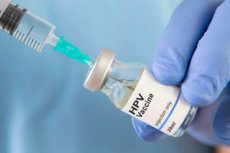New publications
New study shows continued high efficacy of HPV vaccination
Last reviewed: 02.07.2025

All iLive content is medically reviewed or fact checked to ensure as much factual accuracy as possible.
We have strict sourcing guidelines and only link to reputable media sites, academic research institutions and, whenever possible, medically peer reviewed studies. Note that the numbers in parentheses ([1], [2], etc.) are clickable links to these studies.
If you feel that any of our content is inaccurate, out-of-date, or otherwise questionable, please select it and press Ctrl + Enter.

A human papillomavirus (HPV) vaccination programme in England not only led to a significant reduction in cervical cancer rates, but achieved this across all socioeconomic groups, a study published in The BMJ has found.
Although women living in the most deprived areas remain at increased risk of cervical disease compared with women in less deprived areas, the results show that well-planned and implemented public health interventions can both improve health and reduce health inequalities.
About HPV and the vaccination program
HPV is one of the most common sexually transmitted infections. Many countries, including the UK, now offer routine vaccination to girls and boys aged 12 and 13 to protect against strains that can cause cancer later in life.
In England, the HPV vaccination programme began in 2008, with additional vaccination for 14–18 year olds from 2008 to 2010. However, because cervical cancer rates have always been higher in the most disadvantaged groups, there is concern that HPV vaccination may be least effective in protecting those most at risk.
Purpose of the study
To investigate this question, the researchers analysed NHS England data on vaccinated and unvaccinated women aged 20–64 years living in England from January 2006 to June 2020 to assess whether the high effectiveness of HPV vaccination continued in an additional year of follow-up, from July 2019 to June 2020.
Research methodology
The team used the Index of Multiple Deprivation, which divides local areas into five equal groups from the most to the least deprived, to assess the impact of the vaccination programme, taking into account socioeconomic deprivation.
From January 1, 2006 to June 30, 2020, there were 29,968 cases of cervical cancer and 335,228 cases of grade 3 cervical precancerous lesions (CIN3) registered in women aged 20–64 years.
Research results
In the group of women offered the vaccine at age 12–13, rates of cervical cancer and CIN3 in the additional year of follow-up were 84% and 94% lower, respectively, than in the older unvaccinated group. Overall, the researchers estimated that by mid-2020, HPV vaccination had prevented 687 cancers and 23,192 CIN3 cases. Rates remained highest among women living in the most deprived areas, but the HPV vaccination programme had a significant impact across all five levels of deprivation.
For example, the highest number of cervical cancer cases were averted among women in the most deprived areas (192 and 199 cases for the first and second fifths, respectively) and the lowest number of cases were averted among women in the least deprived fifth (61 cases averted).
The number of CIN3 cases averted was also high across all deprivation groups, but highest among women living in more deprived areas: 5121 and 5773 for the first and second fifths respectively, compared with 4173 and 3309 in the fourth and fifth fifths respectively.
For women offered additional vaccination at ages 14–18, CIN3 rates declined more among those in the least deprived areas than those in the most deprived areas. However, for cervical cancer, the strong downward gradient from high to low deprivation seen in the older unvaccinated cohort was no longer present among those offered vaccination.
Conclusion
This is an observational study, so firm conclusions about causality cannot be made, and individual-level data on vaccination status were not available. However, randomized controlled trials have convincingly shown that the vaccine works in preventing HPV infection and in preventing CIN3 in women who were HPV-free at the time of vaccination.
More importantly, the authors say it was a well-designed study based on high-quality national cancer registry data, making it "powerful and less prone to confounding than analyses based on individual HPV vaccination status."
Thus, they conclude: "The HPV vaccination programme in England is not only associated with a significant reduction in cervical neoplasia incidence in target cohorts but also across all socioeconomic groups."
They add: "Cervical screening strategies for women offered vaccination must carefully consider the differential effect on both incidence rates and inequalities that are evident among women offered additional vaccination."
US researchers in a linked editorial stress the importance of reaching the 90% vaccination coverage target recommended by the World Health Organization, but acknowledge several challenges, such as vaccine hesitancy, financial issues, health system capacity, supply and differences in the extent to which health workers recommend vaccination.
To overcome the challenges of achieving target coverage and maximizing herd immunity, "a collaborative effort between government, public stakeholders and health professionals in these countries is needed," they conclude.
